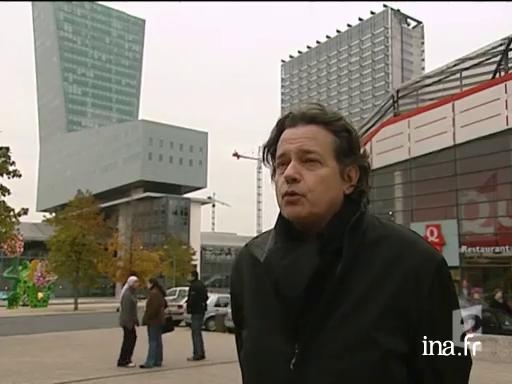Christian de Portzamparc

Information
In the framework of Lille's 2004 cultural events, an exhibit is dedicated to the work of architect Christian de Portzamparc. Accompanied by a young architecture student, the latter comments on a few of his previous works.
- Asia > China
- Europe > France > Ile-de-France > Paris
- Europe > France > Nord-Pas de Calais > Nord
- North America > United States
- South America > Brazil
Context
After having studied painting and architecture at Beaux-Arts de Paris in the workshops of Eugene Beaudouin and George Candilis, Christian de Portzamparc brought into question the modernist doctrines, mainly that of "tabula rasa". He worked in 1970 in the psychology group brought together by Jacqueline Palmade on the lives of inhabitants of new cities, which sought through its research for the Corda: "significant units in the town". He turned toward the study of public spaces and urbanism with Antoine Grumbach. His first project, a water-tower in Marne-la-Vallée, was built in the middle of a roundabout.
The 210 apartments on rue des Hautes Formes incarnate the image of the modern contextual town capable of being embedded in continuity in the existing fabric. The development of the "open islet" concept, opposed to the Haussmanian block and to the open plan of the great sites, imposes the idea of the empty as form in towns. The development zone Paris Rive Gauche illustrates this fragmented urbanity with carefully placed open spaces and hierarchic public spaces. He has completed among others the Philharmonic in Luxembourg, the headquarters of Le Monde in Paris, the French embassy in Berlin, the LVMH tower in NYC, the Euralille Tower in Lille, the Cité de la Musique in Paris. First French person to have received the Pritzker Prize in 1994, he would be awarded the Grand Prix de l'Urbanisme and two Equerres d'Argent among others.


